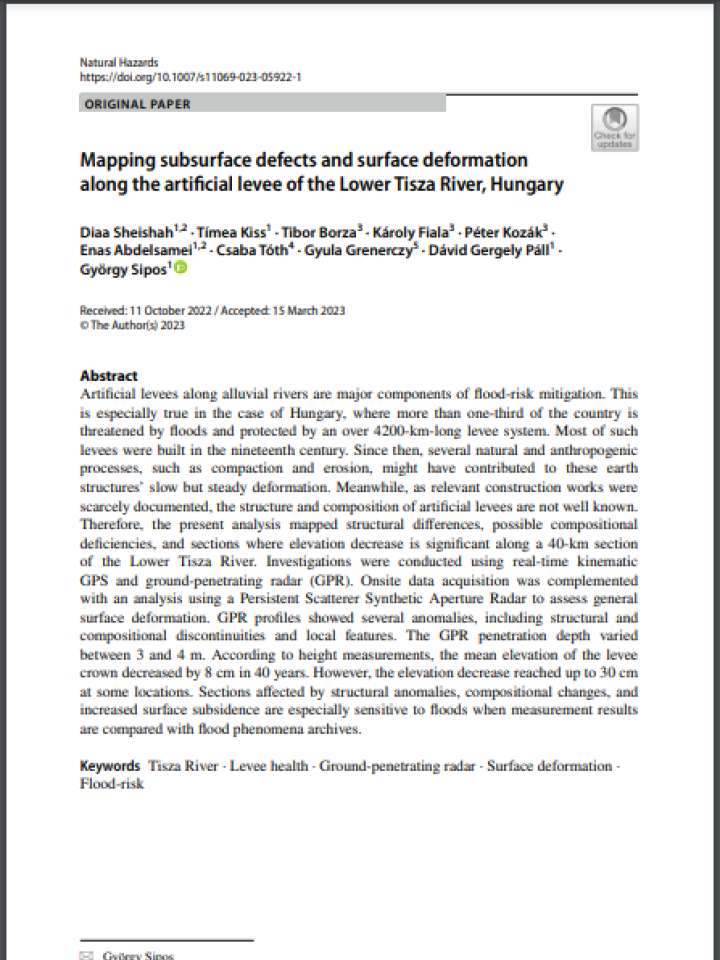Mapping subsurface defects and surface deformation along the artificial levee of the Lower Tisza River, Hungary
The main objective of the study is to develop a set of tools to map and relatively easily assess the risk related to potential levee malfunction using a 40-km-long test site along the Lower Tisza River. This is because many researchers usually target the identification of certain types of defects, but there is yet no inventory of the type of defects that can be identified using GPR.
On the basis of the geophysical surveys conducted on the Tisza levee section, the researchers conclude that the combined use of GPS, PSI, and GPR with data validation collected from flood phenomena recordings is an effective approach for examining the levee conditions in terms of flood-risk and flood resistance capacity. From elevation and surface deformation velocity measurements, the researchers observed a considerable height decrease along the surveyed levee crown and levee foot between 1976 and 2017.
Explore further
